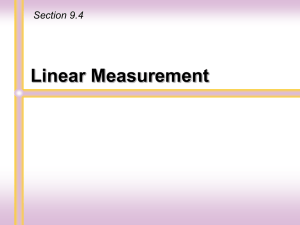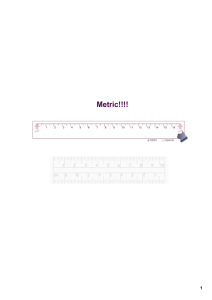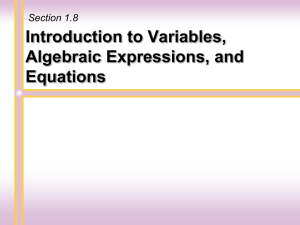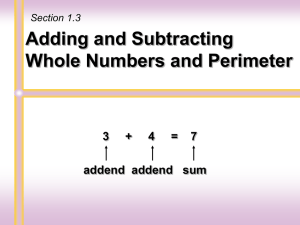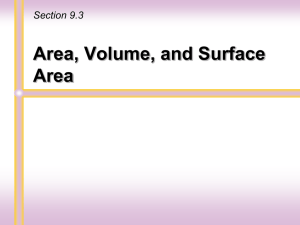Chapter 9: Geometry and Measurement
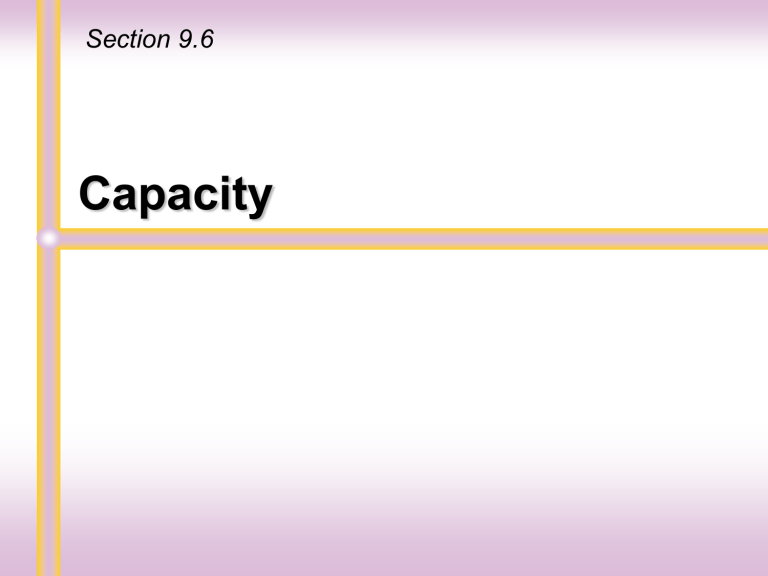
Section 9.6
Capacity
Units of capacity are generally used to measure liquids. The number of gallons of gasoline needed to fill a gas tank in a car, the number of cups of water needed in a bread recipe, and the number of quarts of milk sold each day at a supermarket are all examples of using units of capacity.
Martin-Gay, Prealgebra, 5ed
2
U.S. Units of Capacity Unit Fractions
8 fluid ounces (fl oz)
=
1 cup (c)
2 cups
2 pints
4 quarts
=
=
=
1 pint (pt)
1 quart (qt)
1 gallon (g)
8 fl oz
1 c
=
1 c
8 fl oz
=
1
2 c
=
1 pt
1 pt 2 c
=
1
2 pt
=
1 qt
1 qt 2 pt
=
1
4 qt
=
1 gal
1 gal 4 qt
=
1
Martin-Gay, Prealgebra, 5ed
3
Capacity: Metric System of
Measurement
The liter is the basic unit of capacity in the metric system. A liter is the capacity or volume of a cube measuring 10 centimeters on each side.
10 cm
10 cm
10 cm
4
The prefixes for metric units of capacity are the same as for metric units of length and mass.
Prefix kilo hecto deka deci centi milli
Meaning
1000
100
10
Metric System of Measurement
1/10
1/100
1/1000
Metric Unit of Length
1 kilo liter (kl)
=
1000 liters (L)
1 hecto liter (hl)
=
100 L
1 deka liter (dal)
=
10 L
1 liter (L)
=
1 L
1 deci liter (dl)
=
1/10 or 0.1 L
1 centi liter (cl)
=
1/100 or 0.01 L
1 milli liter (ml)
=
1/1000 or 0.001 L
5
Martin-Gay, Prealgebra, 5ed
The two most commonly used units of capacity in the metric system are the milliliter and the liter .
As with length and mass, all units of capacity are powers of 10 of the liter, so converting from one unit of capacity to another only involves moving the decimal point.
End Start kl hl dal L dl cl ml
3 units to the left
Using the listing of units of capacity, convert 5350 ml to liters.
5350 ml = 5.350 L
3 places to the left
Martin-Gay, Prealgebra, 5ed
6

